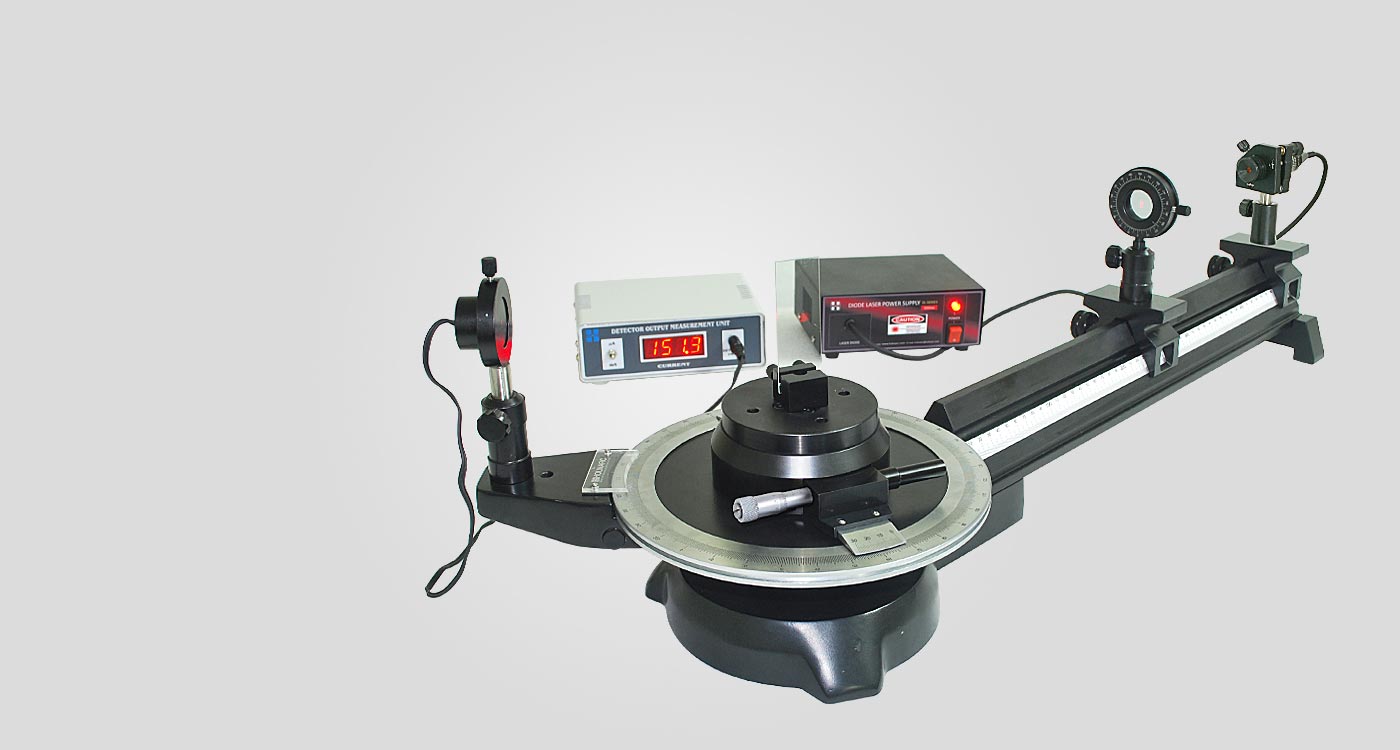Components of the Brewster Angle Apparatus
- Light Source – Usually a laser (e.g., He-Ne laser) or LED light source.
- Polarizer – A polarizing filter to control the incident light polarization.
- Rotating Table – Allows precise adjustment of the angle of incidence.
- Material Sample – Typically a glass plate, acrylic, or other transparent material.
- Photodetector or Eyepiece – Used to measure the intensity of the reflected light.
Experimental Procedure
- Align the Apparatus – Place the light source so that the beam is incident on the transparent material.
- Adjust the Angle of Incidence – Rotate the sample and measure the reflected light intensity at different angles.
- Find Brewster’s Angle – Identify the angle where the reflected light is fully polarized (minimum intensity through a crossed polarizer).
- Calculate Refractive Index – Use θ_B in the equation to determine n₂.
Applications
- Anti-Glare Coatings – Used in sunglasses, camera lenses, and optical coatings.
- Laser Optics – Helps in designing polarizing beam splitters and optical isolators.
- Material Characterization – Determines refractive indices of unknown materials.



There are no reviews yet.